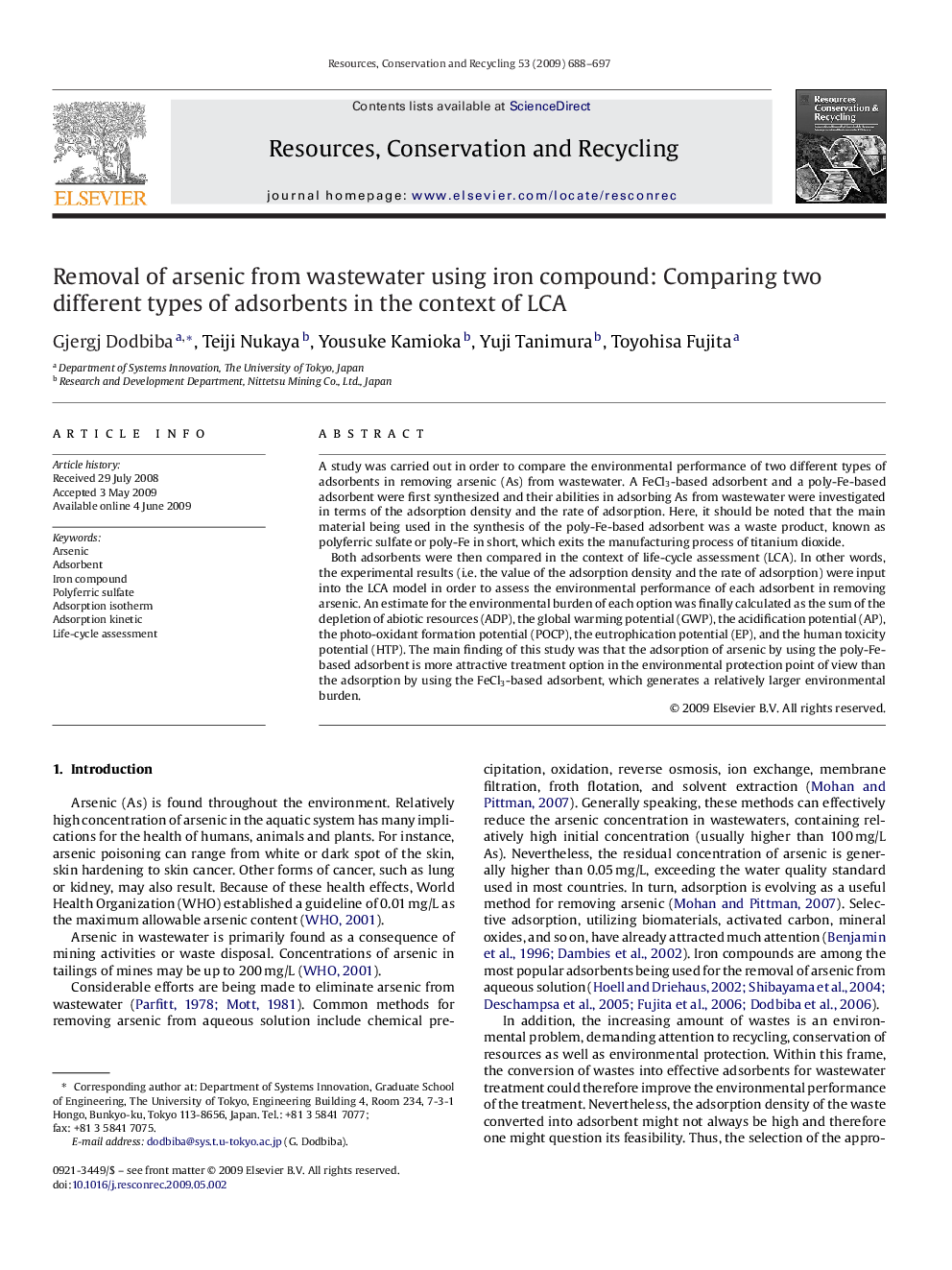| Article ID | Journal | Published Year | Pages | File Type |
|---|---|---|---|---|
| 1063980 | Resources, Conservation and Recycling | 2009 | 10 Pages |
A study was carried out in order to compare the environmental performance of two different types of adsorbents in removing arsenic (As) from wastewater. A FeCl3-based adsorbent and a poly-Fe-based adsorbent were first synthesized and their abilities in adsorbing As from wastewater were investigated in terms of the adsorption density and the rate of adsorption. Here, it should be noted that the main material being used in the synthesis of the poly-Fe-based adsorbent was a waste product, known as polyferric sulfate or poly-Fe in short, which exits the manufacturing process of titanium dioxide.Both adsorbents were then compared in the context of life-cycle assessment (LCA). In other words, the experimental results (i.e. the value of the adsorption density and the rate of adsorption) were input into the LCA model in order to assess the environmental performance of each adsorbent in removing arsenic. An estimate for the environmental burden of each option was finally calculated as the sum of the depletion of abiotic resources (ADP), the global warming potential (GWP), the acidification potential (AP), the photo-oxidant formation potential (POCP), the eutrophication potential (EP), and the human toxicity potential (HTP). The main finding of this study was that the adsorption of arsenic by using the poly-Fe-based adsorbent is more attractive treatment option in the environmental protection point of view than the adsorption by using the FeCl3-based adsorbent, which generates a relatively larger environmental burden.
